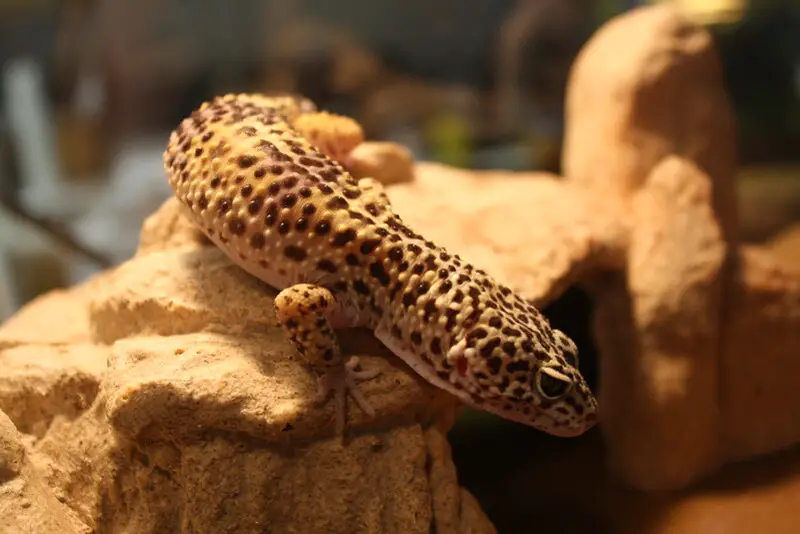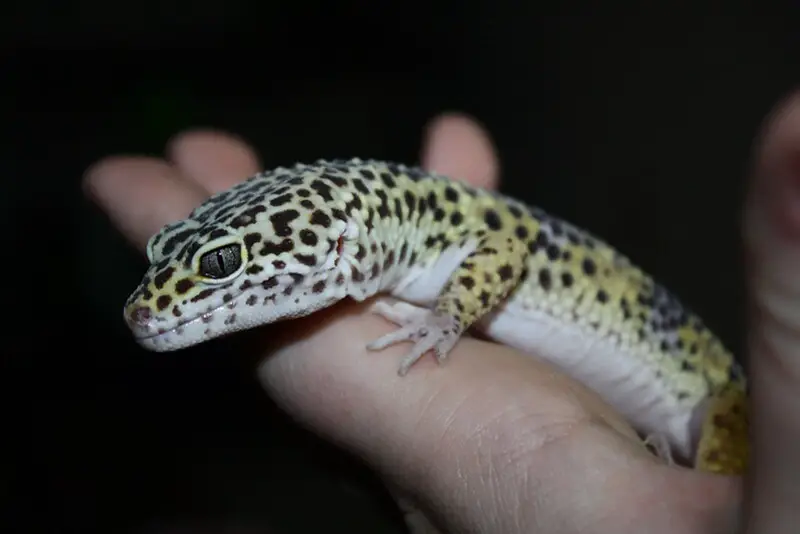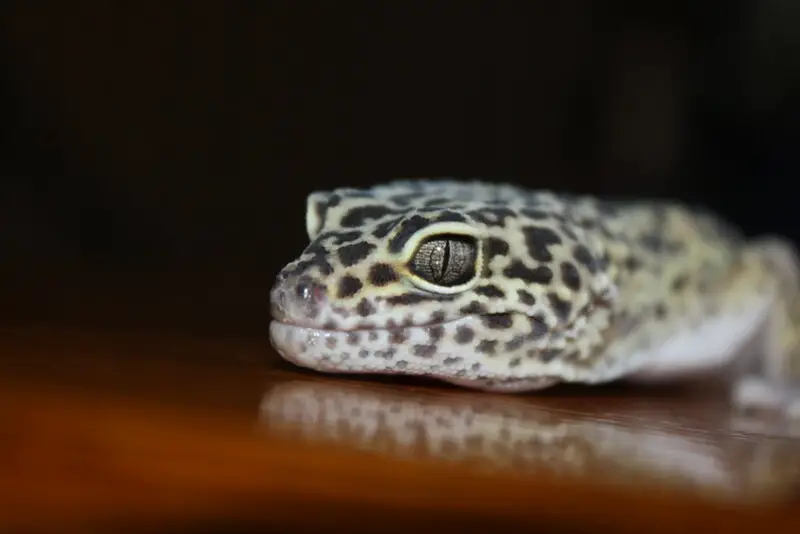One of the unique and intriguing aspects of leopard geckos is their shedding process. Unlike mammals, which continually grow and shed hair or fur, reptiles like leopard geckos shed their skin periodically. This natural process is vital for their growth, health, and well-being. In this comprehensive guide, we will explore the intricacies of the leopard gecko shedding process, including its frequency, signs, causes, and how to assist your gecko during this essential phase of its life.

The Importance of Shedding in Leopard Geckos
Before delving into the specifics of how often leopard geckos shed, it’s crucial to understand why shedding is so essential for their health and survival.
1. Growth
Like all reptiles, leopard geckos have a hard outer skin that does not grow along with their bodies. Instead of continuously growing like mammal fur or bird feathers, reptiles grow by shedding their old skin and revealing a new, larger layer underneath. This process allows them to accommodate their increasing size as they age.
2. Removing Old Skin
Shedding also helps remove old, damaged, or dead skin. Over time, the outer layer of skin can accumulate dirt, dead cells, and parasites. Shedding allows leopard geckos to get rid of this old skin and stay clean and healthy.
3. Rejuvenation
The process of shedding skin provides an opportunity for your leopard gecko’s body to regenerate and rejuvenate. The new skin that is revealed after shedding is often brighter, clearer, and more vibrant in color.
4. Vision and Sensory Perception
Leopard geckos, like many reptiles, have a specialized scale called a spectacle or eyecap over their eyes. This scale is also shed during the shedding process. The removal of the eyecap ensures that your gecko maintains clear and unobstructed vision.
5. Parasite Control
Shedding can help rid the gecko of external parasites, as these parasites often attach themselves to the old, dead skin.
Now that we understand why shedding is so crucial, let’s explore how often this process occurs in leopard geckos.
Shedding Frequency in Leopard Geckos
Leopard geckos go through several stages of development, and the frequency of shedding varies throughout their life. Shedding is most frequent during their early stages of life, when they experience rapid growth. Here’s a breakdown of the shedding frequency at different life stages:
1. Hatchlings and Juveniles
Hatchlings, or baby leopard geckos, tend to shed more frequently than adults. During their first few months of life, hatchlings may shed every 10-14 days. This high shedding frequency is primarily due to their rapid growth.
Juveniles, which are slightly older than hatchlings, also shed relatively often. They typically shed every 15-20 days during their growth phase.
2. Subadults and Adults
As leopard geckos reach their subadult and adult stages, their growth rate slows down significantly. Consequently, they don’t shed as frequently as their younger counterparts. Subadults usually shed every 20-30 days, while adult leopard geckos may shed every 4-6 weeks or even longer.
It’s important to note that while these are general guidelines, shedding frequency can vary among individual geckos. Factors such as diet, environmental conditions, genetics, and overall health can influence the shedding rate of each gecko.

Signs of an Approaching Shed
Before leopard geckos shed their skin, there are several noticeable signs and changes in their behavior and appearance that you can observe. Recognizing these signs can help you anticipate and prepare for the shedding process. Here are the common signs that indicate an approaching shed:
1. Dull and Cloudy Eyes
One of the earliest signs of an impending shed is the appearance of dull, cloudy eyes. Leopard geckos have a transparent spectacle (eyecap) covering their eyes, and just before shedding, this spectacle becomes opaque and foggy. This temporary eye cloudiness is known as “ocular opacity.” It can last for several days and may make the gecko’s vision appear impaired.
2. Skin Becomes Dull
In addition to cloudy eyes, the gecko’s overall skin may look dull and lackluster. The coloration may appear faded, and you may notice that the patterns on the gecko’s skin are less defined.
3. Increased Hiding Behavior
Leopard geckos often seek out hiding spots in their enclosure when they are preparing to shed. They may become less active and spend more time in their hides, burrows, or other secluded areas.
4. Reduced Appetite
A common behavioral change associated with shedding is a decrease in appetite. Leopard geckos might eat less or refuse food altogether during this period. It’s essential not to force-feed or disturb them when they are not interested in eating.
5. Restlessness
While increased hiding is typical, some geckos can become restless and may frequently explore their enclosure or scratch at surfaces in an attempt to aid the shedding process.
6. Loose Skin
As the shedding process progresses, you may notice that the gecko’s old skin begins to loosen and separate from the new skin beneath it. This may be most apparent around the head and neck.
Once you observe these signs, it’s important to provide the appropriate conditions and care to support your gecko through the shedding process.
The Shedding Process
Leopard geckos shed their skin in several distinct stages, and understanding these stages can help you assist your gecko during the process.
1. Pre-Shedding
During the pre-shedding stage, as indicated by the signs mentioned earlier, the gecko’s body prepares for shedding. The spectacle, or eyecap, over each eye may appear opaque, and the gecko’s overall skin may look dull and faded.
2. Soaking and Hydrating
As the old skin begins to loosen, leopard geckos often seek out moisture to facilitate shedding. You can provide a shallow dish of clean, lukewarm water in their enclosure to help them soak. The humidity from the water assists in softening the old skin, making it easier to shed.
3. Removal of Spectacles
One of the first parts to shed is the spectacle, or eyecap, which covers the gecko’s eyes. These eyecaps typically come off first and reveal clear, bright eyes once shed. Do not attempt to remove the eyecaps yourself, as the gecko will naturally shed them.
4. Shedding of the Body
Once the eyecaps are removed, the gecko’s body shedding begins. This is a gradual process where the old skin starts peeling away from the new skin underneath. The gecko may rub against objects or use its mouth to loosen the old skin.
5. Eating the Shed Skin
It’s common for leopard geckos to consume their shed skin. This behavior may seem unusual, but it serves a purpose. In the wild, consuming shed skin can help minimize the presence of evidence that could attract predators to their location. Additionally, the shed skin provides a source of nutrients.
6. Post-Shedding
Once the shedding process is complete, the gecko will appear vibrant, with clear eyes, and its skin will be noticeably brighter and more colorful. It’s essential to monitor the gecko’s behavior to ensure there are no remaining pieces of old skin stuck on its toes, tail, or other body parts.

Assisting Your Leopard Gecko During Shedding
While leopard geckos are generally capable of shedding on their own, there are steps you can take to assist and support them through the process. Here are some helpful tips:
1. Maintain Proper Humidity
Keep the humidity in your gecko’s enclosure at an appropriate level. A humidity level of around 20-40% is suitable for most of the time, but increasing the humidity slightly (up to 50-60%) during shedding can be beneficial. This helps soften the old skin and make it easier to shed.
2. Provide a Moist Hide
In addition to maintaining proper humidity, offer a moist hide within the enclosure. A moist hide is a shelter filled with damp substrate (e.g., moistened paper towels, sphagnum moss, or coconut coir). The gecko can use this hide when it’s ready to shed.
3. Be Patient
Avoid the temptation to rush the shedding process or interfere with it. The gecko will shed naturally, and your role is to provide the right conditions and support. Do not attempt to peel or remove the old skin yourself, as you could harm the gecko in the process.
4. Monitor for Stuck Shed
Sometimes, small pieces of old skin can remain attached to certain areas of the gecko’s body, such as the toes or tail. If you notice any areas with stuck shed, you can gently use a damp cotton swab to help remove it. Be very gentle and avoid causing any injury.
5. Provide Fresh Water
During the shedding process, ensure that clean, fresh water is readily available to the gecko. Staying hydrated is important, especially if they are consuming their shed skin, as it can be a source of moisture and nutrients.
6. Avoid Handling
While your leopard gecko is shedding, it’s best to minimize handling as much as possible. Handling can be stressful and may interfere with the shedding process. Instead, focus on maintaining their enclosure and ensuring it provides the right conditions.
Common Shedding Problems and Solutions
Most leopard geckos shed their skin without any major issues. However, there are some common problems that can arise during shedding, and it’s important to know how to address them:
1. Retained Spectacles (Eyecaps)
Sometimes, the eyecaps may not shed entirely, leaving a small piece of old skin over the eye. If this happens, consult with a reptile veterinarian for guidance on safe removal.
2. Incomplete Shed
In some cases, a gecko may not shed its entire skin in one piece. This can result in patches of old skin remaining attached. If this happens, follow the “Monitor for Stuck Shed” tips mentioned earlier to gently remove the remaining skin.
3. Stuck Shed on Toes or Tail
Stuck shed on the toes or tail can be more problematic if left unaddressed. Gently remove the stuck shed using a damp cotton swab. Be very careful to avoid injuring the gecko. If the problem persists, consult with a veterinarian.
4. Prolonged Shedding
In rare cases, a gecko may experience difficulty shedding for an extended period, which could indicate an underlying health issue. If your gecko consistently has prolonged shedding issues, consult with a reptile veterinarian for a thorough examination and diagnosis.
Conclusion
Shedding is a fundamental and fascinating aspect of a leopard gecko’s life. Understanding the frequency, signs, and stages of shedding is essential for providing proper care and support to your gecko during this process. By creating the right environmental conditions and allowing your gecko to shed naturally, you can help ensure its health, vitality, and overall well-being. Shedding is not only a physical renewal but also a visible sign of a healthy and thriving leopard gecko in captivity.
